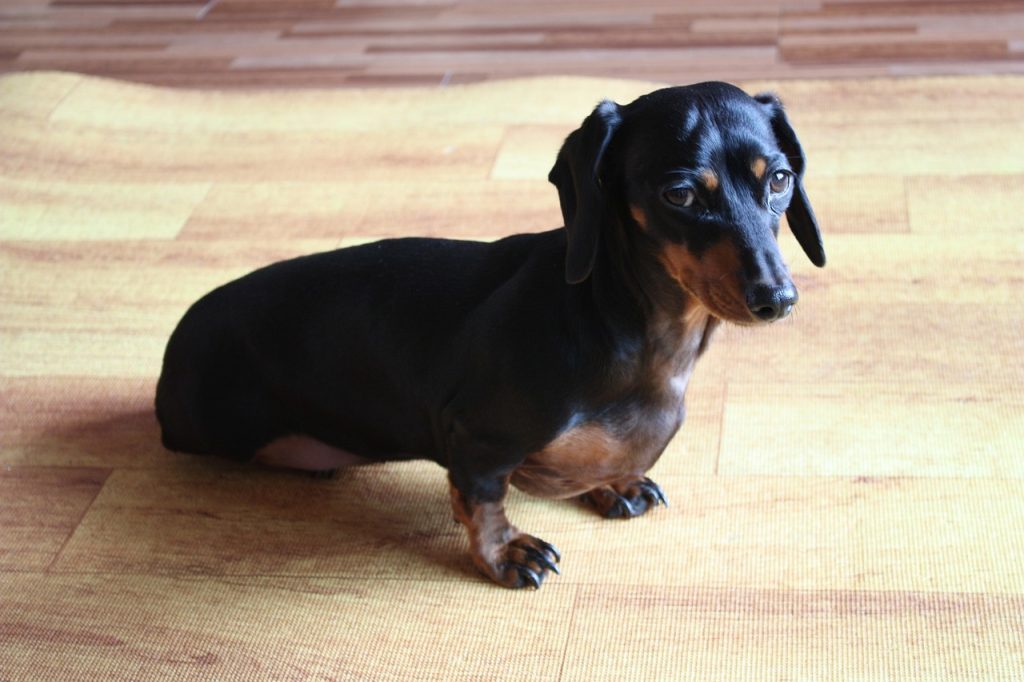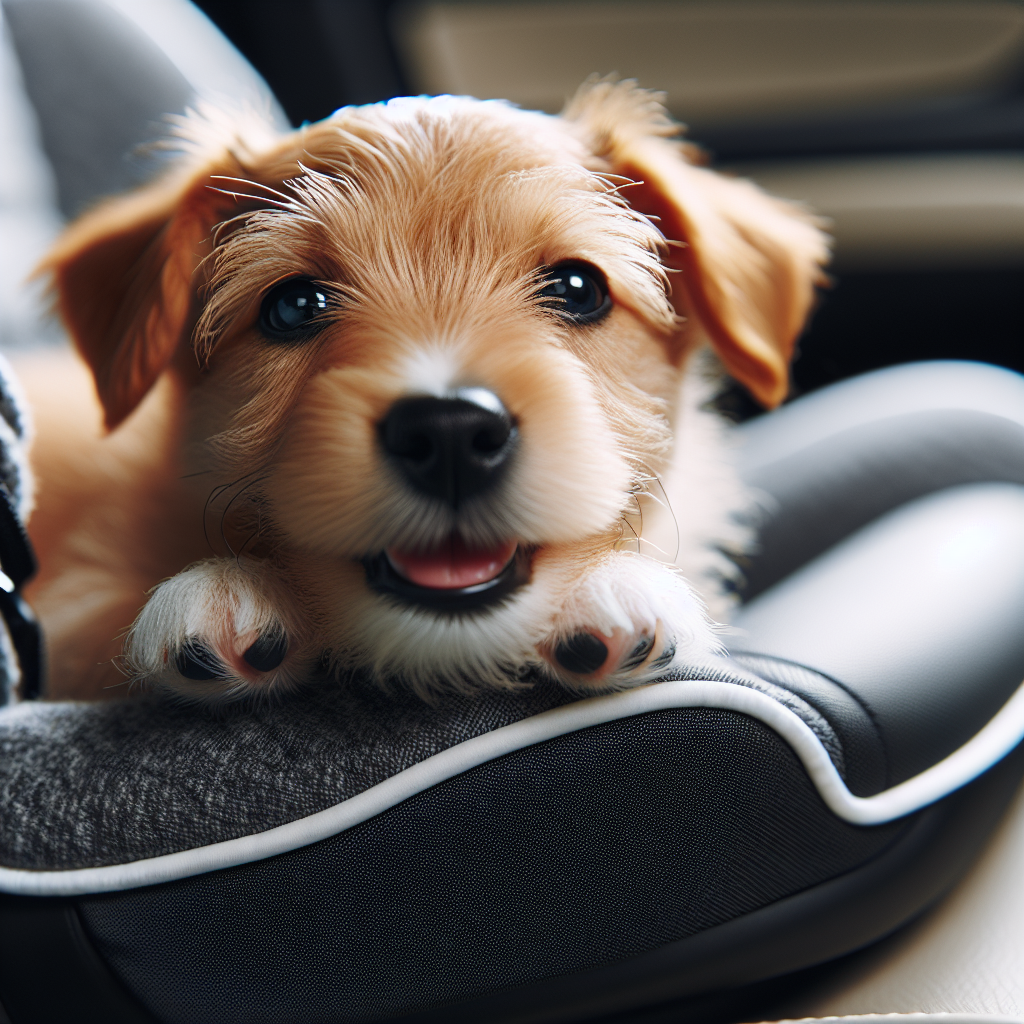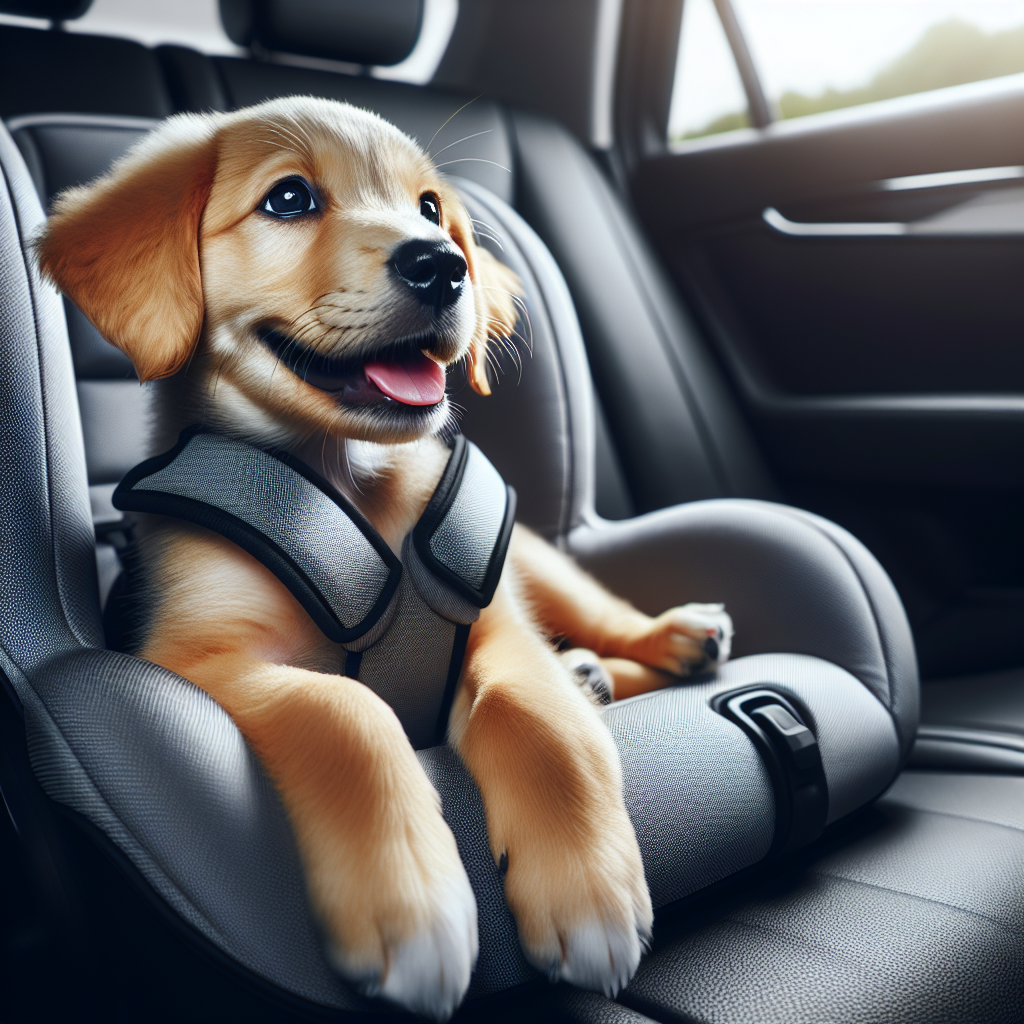You adore your new furry friend, but taking them on car rides is a nightmare. The whining, the anxious panting, and the constant fidgeting make it an unpleasant experience for both of you. But fear not! In this article, we will guide you on how to train your puppy to be comfortable in a car. We’ll share some easy and effective techniques that will help your pup associate car rides with relaxation and enjoyment. So, say goodbye to the stress and hello to a calm and happy pup during your next road trip adventure!

This image is property of pixabay.com.
Creating a Positive Association with the Car
Choose a Comfortable and Safe Car
To train your puppy to be comfortable in a car, it’s important to choose a car that is well-suited for their needs. Opt for a vehicle that provides a comfortable and safe environment for your furry friend. Consider the size of your puppy and ensure that there is enough space for them to move around comfortably. Additionally, make sure that the car is equipped with safety features such as airbags and proper seatbelt systems to ensure their safety during the ride.
Start with Short Trips
It’s essential to introduce your puppy to the car gradually. Start with short trips around the neighborhood to help them get acquainted with the car environment. These short trips will allow your puppy to experience the sounds and movements associated with car rides without overwhelming them. Choose calm and quiet routes to minimize any external distractions that might make your puppy anxious.
Reward the Puppy with Treats and Praise
Positive reinforcement plays a crucial role in training your puppy to be comfortable in a car. Whenever your puppy exhibits calm and relaxed behavior during a car ride, reward them with treats and praise. This will create positive associations with the car and reinforce the idea that being in the car is a good and enjoyable experience. Make sure to use treats that your puppy loves to maximize their motivation.
Gradually Increase the Time in the Car
Once your puppy becomes comfortable with short car trips, gradually increase the duration of the rides. Start by adding a few extra minutes to each trip and monitor your puppy’s behavior closely. If they show any signs of discomfort or anxiety, go back to shorter trips and continue to build their confidence over time. Patience is key when training your puppy, so take it at their own pace and gradually extend the length of the car rides.
Getting the Puppy Used to Car Sounds and Movements
Expose the Puppy to Car Sounds at Home
To familiarize your puppy with the sounds of a car, start by playing recordings of car engine noises and traffic sounds at home. Begin with lower volumes and gradually increase the intensity as your puppy becomes more comfortable. This helps desensitize them to the noises they will encounter during actual car rides. You can find car sound recordings online or use apps specifically designed for this purpose.
Practice Car Movements in the Driveway
Another way to acclimate your puppy to the sensation of being in a moving car is to simulate car movements in your driveway. Sit inside the car with your puppy and gently rock the vehicle back and forth. Start with slow and gentle movements, gradually increasing the intensity. This mimics the motion they will experience during actual car rides and helps them become accustomed to it in a controlled environment.
Take the Puppy on Short Drives to Get Familiar with Car Motion
After your puppy becomes comfortable with simulated car movements, it’s time to take them on short drives to expose them to the actual motion of a moving car. Start with slow and smooth drives around familiar routes to prevent overwhelming them with new surroundings. Keep the drives short at first, gradually increasing the distance as your puppy becomes more at ease. This step helps your puppy associate the car’s motion with safe and enjoyable experiences.
Ensuring a Safe and Secure Car Ride
Use a Harness or Carrier
When traveling with your puppy in the car, it is crucial to ensure their safety by using a harness or carrier specifically designed for car travel. A harness or carrier provides restraint and prevents your puppy from roaming freely in the car, reducing the risk of injury and distractions. Choose a high-quality harness or carrier that fits your puppy properly and is comfortable for them to wear during the ride.
Secure the Puppy in the Car
In addition to using a harness or carrier, it’s important to secure your puppy properly while in the car. Use a seatbelt attachment or a car seat specifically designed for dogs to anchor the harness or carrier to the seat. This prevents the puppy from moving around excessively during the ride and ensures their safety. Avoid allowing your puppy to sit on your lap while driving, as it may interfere with your ability to operate the vehicle safely.
Provide Comfortable Bedding
To make the car ride as comfortable as possible for your puppy, provide them with cozy bedding. Place a soft blanket or dog bed inside the carrier or harness to cushion their body and make them feel secure. Comfortable bedding helps create a positive association with the car and provides physical comfort during the ride. Consider using bedding with familiar scents, such as their favorite blanket or toy, to further enhance their comfort.
Keep Windows Securely Closed
While it may be tempting to roll down the windows for fresh air, it’s important to keep them securely closed during car rides with your puppy. Unsecured windows pose a safety risk as your puppy may attempt to jump out or get injured by objects outside the car. Rolling down the windows slightly to allow for proper ventilation is acceptable, but always ensure they are not low enough to endanger your puppy or create a chance for escape.
Avoid Free Roaming in the Car
Allowing your puppy to roam freely in the car can be unsafe and distracting. It’s important to restrict their movement to prevent accidents or injury. Keep your puppy secured in their harness or carrier and avoid letting them move around the car while it is in motion. This not only ensures their safety but also prevents potential distractions that may compromise your focus as the driver.
Preventing Motion Sickness
Feed Your Puppy Several Hours Before the Car Ride
Motion sickness can be a common issue for puppies during car rides. To help prevent or minimize motion sickness, avoid feeding your puppy immediately before a car ride. Feed them a few hours before the ride to allow ample time for digestion. A full stomach can increase the likelihood of nausea and discomfort, so providing some space between mealtime and car rides can help mitigate these effects.
Keep the Car Well-Ventilated
A well-ventilated car can help reduce the chances of motion sickness for your puppy. Open the windows slightly to allow for proper air circulation during the ride. Fresh air can help alleviate any queasiness or discomfort associated with motion sickness. However, be mindful of your puppy’s comfort and the temperature outside. Avoid excessive wind or drafts that may cause them to become too cold or uncomfortable.
Avoid Sudden Stops and Turns
Sudden stops and turns can worsen motion sickness in puppies. While it may be challenging to completely eliminate abrupt movements during a car ride, try to drive smoothly and anticipate any turns or stops ahead of time. Gradual and gentle maneuvers can help reduce the likelihood of your puppy experiencing motion sickness and make the ride more pleasant for them.
Take Frequent Breaks
If your puppy is prone to motion sickness or shows signs of discomfort during car rides, consider taking frequent breaks. Plan your travel route to include rest stops where your puppy can stretch their legs and have a short break from the car. This allows them to recover from any queasiness and helps prevent motion sickness from escalating. Taking breaks also helps make the car journey more enjoyable, as your puppy gets a chance to explore new surroundings and expend some energy.
Consult Your Veterinarian for Medication or Natural Remedies
If your puppy continues to experience severe motion sickness despite your efforts, it may be beneficial to consult your veterinarian. They can provide guidance and prescribe medication that can alleviate the symptoms of motion sickness. Additionally, there are also natural remedies available that have been known to help alleviate nausea and discomfort in dogs. Your veterinarian can recommend the best course of action based on your puppy’s specific needs.

Teaching the Puppy Proper Car Etiquette
Encourage Calm Behavior
When training your puppy to be comfortable in the car, it’s important to encourage calm and relaxed behavior. Reinforce positive behavior by offering treats and praise when your puppy remains calm during the car ride. Avoid scolding or punishing them for anxious or restless behavior, as this could reinforce their fear or discomfort. Instead, redirect their attention to a chew toy or provide soothing music to help them relax.
Teach the ‘Stay’ and ‘Wait’ Commands
Teaching your puppy basic obedience commands such as “stay” and “wait” can be beneficial during car rides. These commands help teach your puppy to remain in one place and wait for your instructions, reducing the chances of them causing distractions or attempting to jump out of the car. Practice these commands at home and gradually introduce them during car rides, rewarding your puppy for following them correctly.
Discourage Barking or Whining
Barking or whining can be disruptive and distracting while driving, so it’s important to discourage these behaviors in the car. Use positive reinforcement to reward your puppy for remaining calm and quiet during the ride. If your puppy starts barking or whining, try to redirect their attention with a treat, chew toy, or soothing voice. Avoid yelling or scolding, as this may increase their anxiety or stress levels.
Avoid Overstimulation in the Car
Overstimulation can lead to anxiety and discomfort in puppies during car rides. Avoid overstimulating your puppy by limiting the number of people or other animals in the car during the initial training phases. This helps create a calmer and more controlled environment, allowing your puppy to focus and adjust to the car experience without overwhelming distractions. Once your puppy becomes more comfortable, you can gradually introduce other passengers and pets.
Socializing Your Puppy to Car Environments
Expose the Puppy to Different Car-related Sights and Sounds
To help your puppy become comfortable with car environments, expose them to various car-related sights and sounds. Take them to a parking lot or a location near busy roads, where they can observe passing cars, honking horns, and other car-related noises. This exposure helps desensitize them to these environmental stimuli and prepares them for the real car experience.
Practice Car Rides with Other Passengers
Once your puppy has become more comfortable with car rides, gradually introduce other passengers to the equation. Invite friends or family members to join you on short car rides with your puppy. This helps your puppy become accustomed to the presence of others in the car and builds their confidence in different social settings. Ensure that the passengers are calm and considerate, providing a positive environment for your puppy.
Introduce the Puppy to Car Travel Accessories
To further socialize your puppy to the car environment, introduce them to car travel accessories. Show them items such as dog seat covers, travel crates, or car seat belts. Allow your puppy to sniff and explore these accessories, making them familiar and non-threatening. Associating these items with positive experiences, such as treats or playtime, can help your puppy feel more at ease when using them during future car rides.

Dealing with Fear or Anxiety in the Car
Identify the Cause of Fear or Anxiety
If your puppy continues to exhibit fear or anxiety during car rides, it’s crucial to identify the underlying cause. It could be triggered by a negative experience in the past, motion sickness, or general anxiety related to car travel. Observe your puppy’s behavior closely and try to pinpoint any specific triggers. Understanding the cause of their fear or anxiety will help you tailor your approach and address the issue appropriately.
Use Counterconditioning Techniques
Counterconditioning is a technique used to change your puppy’s emotional response to a specific stimulus, in this case, car travel. Gradually expose your puppy to the car in a positive and controlled manner, pairing the experience with rewards, such as treats, toys, or praise. Start by having your puppy near the car without actually entering it, gradually progressing to short trips with lots of positive reinforcement. The goal is to create new positive associations with the car that replace their previous negative ones.
Consult a Professional Trainer or Behaviorist
If your puppy’s fear or anxiety persists despite your best efforts, it may be beneficial to seek professional help. A professional trainer or behaviorist can assess your puppy’s specific needs and provide personalized guidance and training techniques. They may be able to identify underlying issues or recommend additional strategies to help alleviate your puppy’s fear or anxiety in the car.
Common Challenges and Troubleshooting
Excessive Drooling or Panting
Excessive drooling or panting in the car can be signs of anxiety or motion sickness in your puppy. If you notice these behaviors, it’s essential to address the underlying cause. Ensure that your puppy is well-ventilated, comfortable, and not overheating during the ride. If motion sickness is the issue, consult with your veterinarian for potential remedies or strategies to alleviate your puppy’s symptoms.
Chewing on Car Interiors
Some puppies may engage in destructive chewing behavior in the car due to anxiety or boredom. To prevent this, provide your puppy with suitable chew toys or treats to redirect their chewing. Additionally, make sure the car environment is free from potential hazardous objects or loose items that your puppy may be tempted to chew on. If the behavior persists, consult with a professional trainer to address and correct the underlying cause.
Escaping or Jumping out of the Car
Escape attempts or jumping out of the car can be dangerous for your puppy and those around them. Ensure that your puppy is securely restrained with a harness or carrier to prevent such incidents. If your puppy shows persistent escape behavior, it is crucial to address their anxiety or fear with appropriate training techniques or seek help from a professional trainer.
Excessive Whining or Barking
Excessive whining or barking can be a sign of discomfort, fear, or anxiety in the car. To address this behavior, try to identify and alleviate the underlying cause. Provide your puppy with a calm and secure environment, offer soothing music or white noise, and keep them engaged with chew toys or treats. Consult a professional trainer or behaviorist if the whining or barking persists to help address the issue effectively.
Maintaining a Positive Car Experience
Continue Regular Car Rides
Once your puppy has become comfortable with car rides, it’s important to continue incorporating them into their routine. Regular car rides help maintain the positive association your puppy has developed with the car and ensure their ongoing comfort and familiarity with the car environment. Practice short and longer trips to keep them engaged and prevent regression in their training.
Provide Reinforcement and Rewards
Consistently reinforce positive behavior during car rides by offering rewards and praise. Continue to provide treats and verbal cues to encourage calm and relaxed behavior. Reinforcing your puppy’s positive association with the car will help enhance their comfort and make car rides an enjoyable experience for them.
Make the Car a Comfortable and Familiar Space
To maintain your puppy’s comfort in the car, create a dedicated space for them that is familiar and cozy. Place their bedding, favorite blanket, or toys inside the car to make it feel like an extension of their safe and secure environment at home. Additionally, consider using calming aids such as pheromone sprays or diffusers to create a soothing atmosphere inside the car.
Conclusion
Training your puppy to be comfortable in a car requires patience, consistency, and positive reinforcement. By following the steps outlined in this article, you can gradually acclimate your puppy to the car environment and ensure a safe and enjoyable car ride experience for both of you. Remember to choose a comfortable and safe car, gradually expose your puppy to car sounds and movements, secure them properly, prevent motion sickness, teach proper car etiquette, socialize them to car environments, and address any fear or anxiety. With time and practice, your puppy will learn to love car rides and enjoy the adventures that lay ahead.